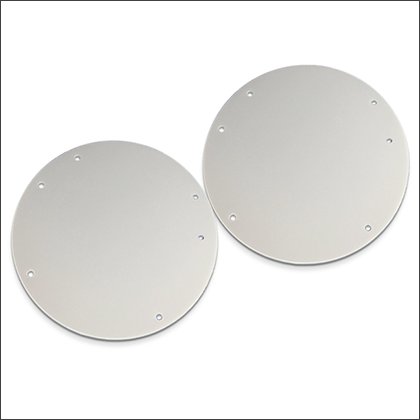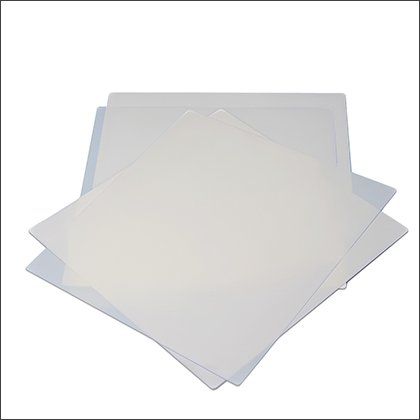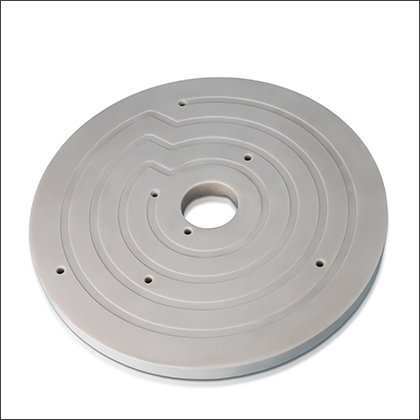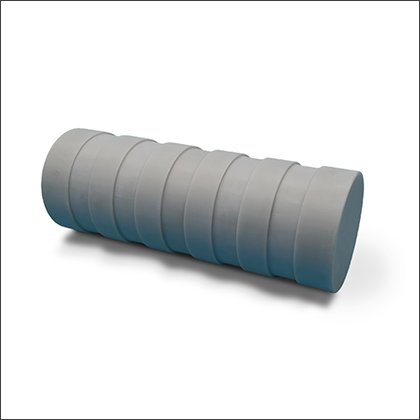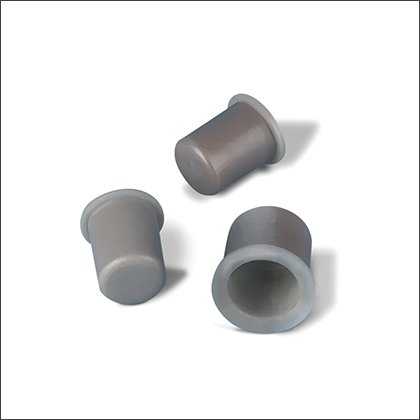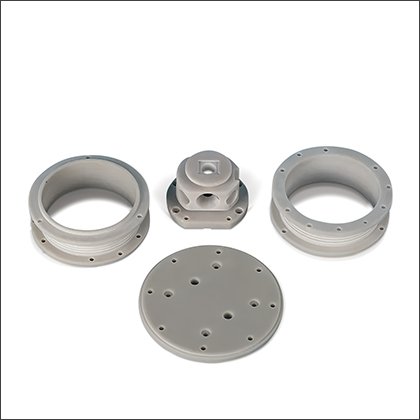Material Overview
Aluminum Nitride (AlN) is a cutting-edge ceramic material renowned for its exceptional thermal conductivity (up to 170 W/mK), low thermal expansion coefficient (4~6×10⁻⁶/K), and superior electrical insulation (resistivity >10^13 Ω·cm), so AlN is deal for thermal management and electrical applications. Composed of aluminum and nitrogen, this non-oxide ceramic features a hexagonal wurtzite crystal structure, making it ideal for high-power electronics, aerospace components, and advanced semiconductor packaging.
Technical Data Table
| Property | AlN (99% Purity) | AlN (Enhanced) |
| Density (g/cm³) | 3.3 | 3.32 |
| Flexural Strength (MPa) | >310 | >310 |
| Modulus of Elasticity (GPa) | 310 | 310 |
| Thermal Conductivity (W/m·K) | 170–230 | 230 |
| Max. service temperature (℃) | 1200 | 1200 |
| Dielectric Strength (kV/mm) | >17 | >17 |
The aluminum nitride power is processed into complex geometric shapes through relevant forming processes. Then it is sintered for densification. The sintering process causes the aluminum nitride parts to shrink by about 20%. After sintering, it must be ground with diamond tools until the desired shape is achieved. In order to fully demonstrate the high thermal conductivity of AlN, the AlN substrate is common product form with a thickness of no more than 1 mm, which is then laser cut into the required specifications. The following display is a common aluminum nitride product of Jinghui Company, which can be processed according to your customized needs.
Key Features
- Ultra-High Thermal Conductivity: 10–15x higher than alumina (Al₂O₃), enabling efficient heat dissipation in high-power devices.
- Thermal Expansion Matching Silicon: Minimizes interfacial stress in electronic packaging, enhancing device reliability.
- Chemical Resistance: Resists acids, alkalis, and molten metals, suitable for harsh environments.
- Non-Toxic: Safer alternative to beryllium oxide (BeO), aligning with environmental regulations.
Applications
- Electronics: Substrates for high-frequency circuits, LED packaging, and power modules.
- Aerospace: Radomes, thermal management systems, and engine sensors.
- Semiconductors: Dielectric isolation layers and heat sinks for ICs.
- Industrial: Crucibles for molten metal handling and high-temperature furnace components.
Manufacturing & Customization
- Forming Method: Dry pressing is suitable for simple shapes and has high efficiency; tape casting can prepare ultra-thin substrates..
- Advanced Machining: Laser cutting, grinding and cutting.
- Composite Enhancements: Adding SiC or Y₂O₃ improves fracture toughness (up to 4.5 MPa√m) for demanding applications.
Aluminum nitride outperforms alumina due to its 6x higher thermal conductivity (170 W/mK vs. 30 W/mK for alumina), enabling efficient heat dissipation in high-density circuits. Its thermal expansion coefficient (4~6×10⁻⁶/K) closely matches silicon (3×10⁻⁶/K), reducing stress-induced failures in semiconductor packaging. Additionally, AlN’s non-toxicity and volume resistivity (>1*1013 Ω·cm) make it safer and more reliable for power modules and LED systems.
AlN’s low dielectric loss (tanδ <0.001 at 1 MHz) and high thermal stability minimize signal attenuation in high-frequency 5G circuits. Its ability to dissipate heat efficiently prevents overheating in RF amplifiers, improving signal integrity and device lifespan. For instance, AlN substrates in GaN-based RF devices reduce junction temperatures by 20%, enhancing power output by 15%.
Yes. AlN’s non-porous structure and chemical inertness allow it to withstand corrosive agents like sulfuric acid (pH <1) and molten aluminum. In chemical reactors, AlN thermocouple tubes show <0.1% weight loss after 5 years of exposure. Its resistance to oxidation at 1,200°C also makes it ideal for aerospace engine components.
Aluminum nitride ceramics can be machined (such as cutting and drilling), but special processes are required, such as diamond wheel cutting, laser processing or ultrasonic drilling, to avoid edge collapse. Ordinary drill bits cannot be used for processing, and diamond tools are recommended. The cost of precision processing of aluminum nitride ceramics is relatively high, and it is best to achieve near-net shape without additional processing.




